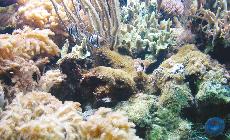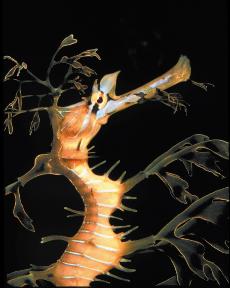The giant pacific octopus lives in cold water, prefers dark caves, and according to my tour guide Max, likes to be scratched by her handler at the New England Aquarium. The octopus “acts like a dog,” Max elaborated. They are very smart creatures. A few years ago, the handlers at the Aquarium noticed that in the morning, some of the flounder had gone missing. Flounder kept disappearing without a trace, so in the spirit of the great Jacques Cousteau, someone stayed up all night with a video camera. It turned out that the octopus had been sneaking out at night. The octopus unlatched her cage, crawled over to the tank that held the flounder (octopi can survive for short periods of time out of the water) and scooped out a few flounder for a midnight snack. The octopus let herself back in to her cage, and latched the door. Similar stories involving octopi have happened at other aquariums. The Aquarium now keeps the octopus enclosure padlocked.Keeping a plethora of marine creatures healthy and happy is a full time job. The sharks (a species that eats once a week in the wild) is fed three times a day at the Aquarium. Sea dragons are some of the most beautiful creatures at the aquarium. The sea dragons are the most delicate creatures at the Aquarium, so the sea dragon tank is the most modern, climate-controlled tank. The Aquarium has two live coral exhibits. A large part of the Aquarium’s live coral came from customs at Logan Airport. Taking even a small piece of live coral can potentially damage a whole ecosystem. Not all ocean dwellers are so adverse to contact with people. The cuttlefish, a close relative to the nautilus, changes colors rapidly as she reacts to her environment. Wave your hand before the glass and the surface of the cuttlefish will burst with color. When the cuttlefish needs to do more than hide, she will shoot ink, much like a squid. The Edge of the Sea exhibit is essentially a maritime petting zoo. Visitors can pick up horseshoe crabs, hermit crabs, muscles, etc. It takes years of training for Aquarium employees to earn the right to dive in the big tank. Sometimes celebrities will visit the Aquarium and go for a dive. Regular folks can’t dive in the big tank, but can spend two hours with harbor seals to the tune of $125.Creatures in the Aquarium hail from all over the world. The Amazon tank has a great range of creatures including a catfish and two turtles who couldn’t stop picking on one another. Right next door are South American tree frogs, the poisonous kind. The Gulf of Maine exhibit, which encompasses open water from Nova Scotia to Provincetown, featured New England staples, muscles, red, white, and blue lobster, and monkfish. The blue lobster is very rare, one in a million, so don’t get any bright ideas about impressing dinner guests. The big tank is a Caribbean environment. Myrtle, a sea turtle in her late 60’s is the big tank’s local celebrity. These days she’s in her lethargic period, which lasts a few months. She’s a big eater, and a bit overweight at 650 lbs. The Aquarium is featuring jellyfish as part of a special exhibit. One of the draws to this exhibit is the lighting – when it works. The sea walnuts – a jellyfish native to the Black Sea that has crowded out anchovy populations – light up like an LED screen.The Aquarium recently began a program at the café to offer sustainable seafood selections on Saturdays. It’s called “Choice Catch,” and one of the recent offerings was tilapia with olive tapanade.
A Visit to the NEAQ
April 11, 2006

The green stuff is mold
Sea dragon





















































